The content of the article
Today, the problem of obesity in domestic animals is very relevant. It is of concern not only to the owners, but also to veterinarians, who notice that obesity is observed more often in pets.
Many cat owners believe that the fatness of a cat is not a problem at all. But it is not. Overweight pet can lead to the development of his disease.
How to understand that a cat is overweight
Before you start worrying about your cat becoming stouter, you need to determine how much its weight is different from normal.
First, the state is assessed visually. Look at the animal from above when it stands. If the body is elongated, while in length it is several times larger than the width, this means that the cat is exhausted. Short-haired or bald cats will show prominent bones. If the cat has a normal weight, then when viewed from the top, you will see that the body is rectangular in shape, but at the same time the animal is slightly shorter in width than in length.Pelvic bones and ribs will not perform.
If the body shape is oval and close to round, then this means that the pet is obese. To better determine the extent of the problem, you need to feel the animal. Take the cat in your arms and feel it. If the weight is too small, then you will not feel fat deposits on your chest and stomach, and the bones will jut out.
If the cat has a normal weight, you can easily find only ribs, sternum and pelvic bones. When feeling the abdomen, small deposits of fat are found. If the spine, ribs, and pelvic bones are felt badly, then the animal is most likely overweight. If the ribs and the spine are so thick a layer of fat that they cannot be felt, then the animal suffers from a significant degree of obesity. At the same time there is a layer of fat on the chest, abdomen and back.
In an animal whose weight is significantly higher than normal, changes in behavior are noted. The cat becomes lazy, moves a little, she does not want to play and run. Sometimes there is shortness of breath, it becomes difficult for an animal to even walk.
To accurately determine the presence and degree of excess weight in an animal, it is necessary to weigh it.It is necessary to know what the norm of weight for animals of different ages and this particular breed.
It is important to remember that cats of different breeds weigh quite differently. For example, for a Maine-Coon cat, weighing 6 kg at a little over a year’s age will be a sign of lack of weight. At the same time for a cat of many other breeds this weight will mean that she is obese.
In order to weigh the cat, it is most convenient to use ordinary bathroom scales. You can put the animal on the scales, or stand on them, taking the cat in his arms. And then take away from this weight your own.
Causes of obesity
A cat can gain excess weight for many reasons. The main ones are improper feeding, lack of mobility, chronic diseases, hormonal disorders.
After sterilization
Many cat owners are convinced that overweight occurs in every animal that has been exposed to such an operation. But in fact, this is the cause of metabolic disorders and obesity only in some animals. This is due to the fact that the pet may come hormonal failure.After all, this operation removes hormone glands. Sex hormones are produced incorrectly, as a result of which the cat increases the level of appetite and also the need for energy decreases.
Delayed metabolism affects not only the reactions in the cat's body, but also its physical activity. She starts to sleep more, run less, so energy is spent much less. If the owner does not take any measures, the increase in appetite and a decrease in activity will lead to the fact that the cat will quickly gain excess weight.
Improper feeding
Many owners simply adore their pets, so they are trying to please him in everything. This also applies to nutrition. Often, the owners themselves are to blame for the cat's weight gain. This is the most common cause of obesity in cats. They simply overfeed.
Experts recommend that you follow certain standards when feeding. To do this, you need to know how much food a cat should eat at a particular age. The need for food is also affected by the breed of the animal. If you feed your pet with ready-made feeds, you can usually read the daily rate information on their packaging.These standards must be observed.
If the pet has unlimited access to food, or the owner gives too large a single portion, it will lead to an increase in the volume of the stomach. The cat will overeat more and more, and quickly gain extra weight.
But obesity can occur not only as a result of overfeeding. Pet may grow fat due to improperly planned diet. If there is too much fat and carbohydrate foods in the feed, deficiency of protein and other necessary substances, the adipose tissue in the cat's body will be synthesized very actively. Do not feed your pet too fatty meat, sausage, pastries. This will lead to impaired digestion, as well as to excess weight.
Hypodynamia
This problem affects not only humans, but also animals. Especially those cats suffer from it, who do not go for walks, but stay at home all the time. Cats by nature need movement, as they are predators.
If the pet is constantly at home and eats ready-made food, while not going out to run and play, it practically does not waste energy. If hypodynamia is exacerbated by excessive and improper feeding,favorite will gain weight very quickly.
Chronic diseases
Sometimes even an active cat that feeds properly can gain weight. Most likely, this is due to a disease. The most common cause of obesity is diabetes. Lack of insulin leads to obesity, as the cat's metabolism is disturbed.
Another common cause of obesity in cats is hypothyroidism. Adipose tissue accumulates, and substances break down more slowly.
In addition, obesity can cause problems with the intestines, liver or pancreas.
Other reasons
The cause of weight gain in a pet may be heredity. Many breeders notice that if the parents of the cat suffered from excess weight, then he may experience such problems.
Obesity can develop with age, as the animal ceases to actively move.
What is the danger
Many owners do not attach importance to the fact that their favorite cat is beginning to gain weight. But this is a disease. Around the world, veterinarians claim that more and more pets have signs of obesity.
Being overweight in a cat can cause quite a few serious health problems. After all, fat accumulates not only under the skin, but also on the organs. This leads to disruption of their work. What can this lead to?
- Effect on the heart and blood vessels. When a cat gains extra weight, the load on the heart increases significantly, as it pumps more blood. In addition, atherosclerosis develops. And this leads to a lack of blood supply to the organs. They get less oxygen and nutrients.
- Increased likelihood of diabetes. For full cats, there is a lot more chance of getting sick with this disease. This is especially true of those whose cause of obesity is malnutrition. When eating large amounts of carbohydrates, the pancreas is subjected to stress.
- Diseases of the internal organs. The liver is most often affected. It ceases to cope with toxins entering the body.
- Obese cats often have problems with joints and ligaments, which suffer from increased stress.
Fact! Veterinarians claim that obese cats live on average several years less than normal weight animals.
It is important to remember that this problem affects almost all organs, and significantly worsens the quality of life of the pet.
Treatment
If you find that the cat has gained excess weight - contact a specialist. He will recommend how to properly change the diet and increase the activity of the animal.
Diet
For a cat to get rid of the problem of obesity, it is necessary to provide it with a diet food. You should not go to extremes and make the animal go hungry. This will further aggravate the state of health. Heart or liver problems may begin.
If you feed your cat not with dry food, but with natural food, then you should pay attention to how fatty foods you give her. Remove fatty meats and dairy products from your pet's diet. Let the meat be lean. This can be a turkey or chicken. Give the cat more vegetables, and dairy products should be skimmed.
It is necessary not only to reduce the caloric content of the feed, but also to reduce a single portion. So that the organs of the animal are not overloaded, divide the diet into three parts. Make sure your pet can drink as much fresh water as he wants.And free access to food must be eliminated without fail.
Choosing food right
If you feed your cat with ready-made food, check with your veterinarian what kind of food you can choose. A new type of feed needs to be introduced gradually. Many manufacturers produce special food that will help the cat to lose weight.
It is important to comply with the recommended standards and not to give the cat a large portion, even if the pet shows signs of hunger. Over time, the cat will get used to a normal diet, and will eat enough of the portion that you give her. Use a measuring cup to make it convenient to measure the right amount of feed.
Increased activity
In addition to changes in nutrition, you need to increase the activity of the cat. If you do not let her go on independent walks, walk with a leash. If there is no time for a walk, get a special complex with which the cat will be able to play alone. You can buy more toys. Domestic cats are very fond of such entertainment.
In addition, it is very important that the owner himself changed his behavior. If you want a cat to lose weight, you should not give him food from the table.The diet should consist only of those products that are allowed for the diet of the animal. Their number should not exceed the norm. It is better to show love for the cat in another way. Play, caress, take her for a walk.
It is very important that the owner realized in time that the obesity of his pet is a serious problem that can lead to a number of others. Therefore, measures must be taken immediately.
Video: what to do if the cat is stouter?


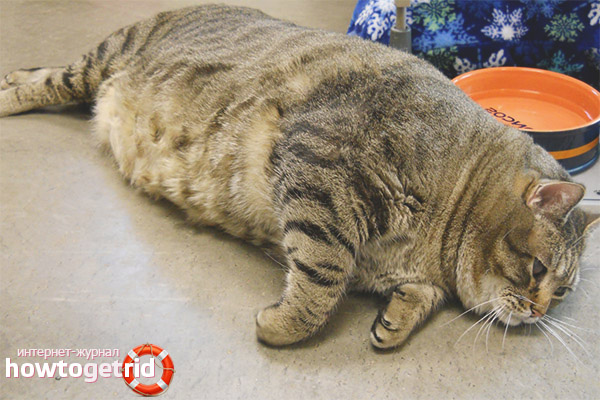
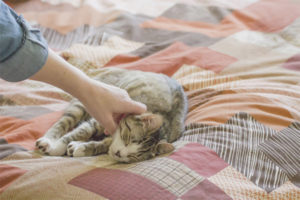
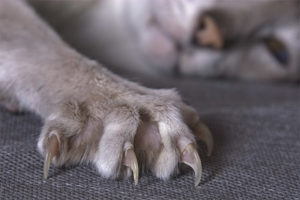
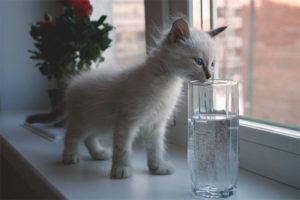
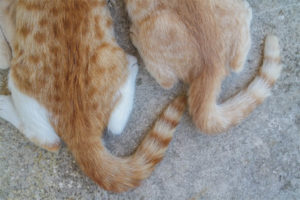
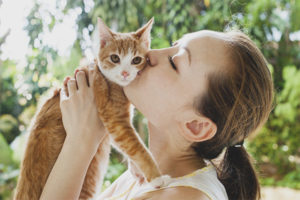
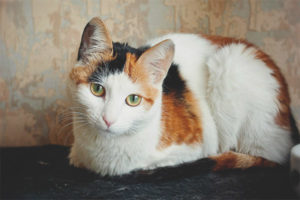
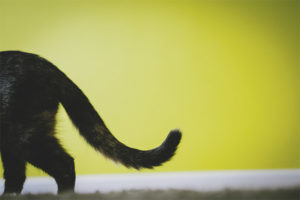
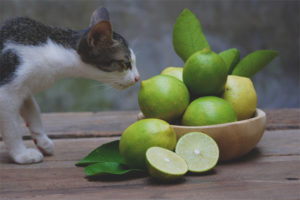
To send